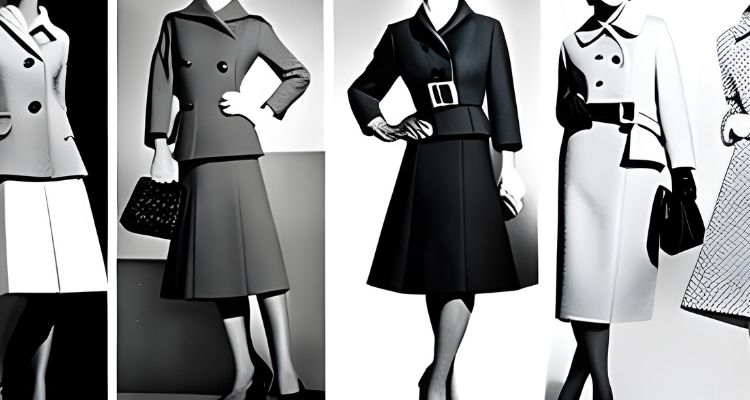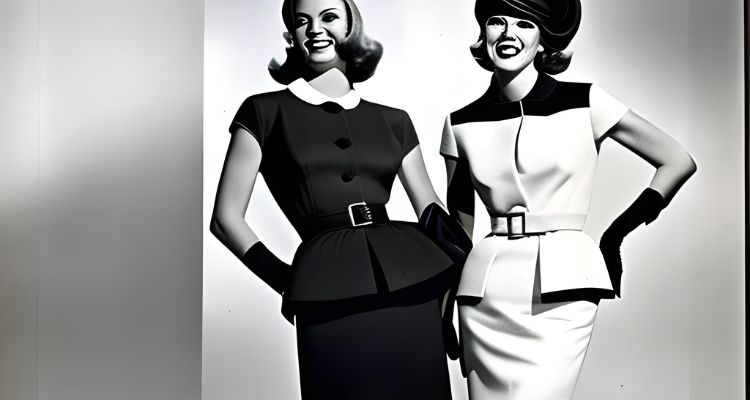The Rise of 1960s Fashion and the Cult of Levi’s saw a great deal of social and cultural development, and this included changes in fashion. Young people adopted new styles that showed their rejection of conventional conventions as they revolted against the conservative beliefs of the preceding generation. Denim, a material historically associated with workwear and practicality but now being elevated to new levels of elegance and refinement, was at the vanguard of this change.
At the core of the denim craze was Levi’s, a well-known American manufacturer of jeans for more than a century. In this article, we’ll trace both rise of 1960s fashion and their histories and consider how they continue to have an impact on fashion today as we examine the rise of 1960s style and the cult of Levi’s. Levi’s has remained a representation of independence, freedom, and self-expression, from the counterculture youth of the 1960s to the vintage fans of today.

I. The History of Levi’s
Levi’s is a quintessential American brand that has become synonymous with denim jeans. Founded in 1853 by Levi Strauss, a German immigrant, the company originally produced rugged workwear for miners during the California Gold Rush. Levi’s didn’t become a household name until the middle of the 20th century, in large part because of their legendary 501 types of jeans.
Levi’s jeans were deemed “necessary work attire” during World War II and quickly became a mainstay of the American wardrobe. After the war, as leisure time and consumer culture expanded, Levi’s jeans became a symbol of casual style and youthful rebellion. During the 1960s, Levi’s was leading the denim revolution, and everyone from hippies to cowboys to rock stars was donning their pants.
To keep up with the shifting demands of fashion, Levi’s has continued to develop and innovate over the years, producing new designs and fits. Several denim companies intensified their competitiveness against Levi’s in the 1980s and 1990s, and the company found it difficult to maintain its market leadership. But, as retro and vintage fashion has become more fashionable in recent years, the business has seen a boom in sales.
Today, Levi’s is still a well-known American brand with a storied past and devoted fans. Levi’s has contributed significantly to influencing American culture and fashion, from its humble beginnings as a seller of workwear to its current prominence as a fashion icon.
II. The 1960s Fashion Scene
Throughout the Rise of 1960s Fashion, there was a period of cultural upheaval and revolt, and young people used fashion as a major form of self-expression. The era’s fashion was characterized by a rejection of conventional conventions and an adoration of liberty, uniqueness, and inventiveness.

Because of its durability and adaptability, denim became a symbol of this new counterculture, making it the ideal fabric for the era’s spirit of adventure. Due to their ties to the Wild West and a reputation for toughness and durability, Levi’s jeans gained particular popularity.
Denim’s position in the fashion world was further solidified by the development of the hippie movement in the middle of the 1960s. Levi’s 501 jeans were frequently worn with flower crowns and peace sign decorations, and bell-bottom jeans, tie-dye shirts, and fringe jackets also gained popularity.
Also, musicians were crucial in marketing Levi’s and denim in general. Elvis Presley is well-known for sporting Levi’s denim outfit in his movie Jailhouse Rock, while The Beatles were frequently spotted wearing denim jackets. On stage, Bob Dylan donned Levi’s pants as well. Dylan was well-recognized for his rebellious and anti-establishment message.
Denim and Levi’s were at the fore of the movement throughout the 1960s fashion scene, which was a time of considerable experimentation and boundary-pushing. The jeans became an important symbol of youth culture and rebellion, and they continue to hold a special place in the fashion world today.
III. Levi’s in the 1960s
The popularity of Levi’s jeans among young people was a defining feature of the 1960s fashion scene and had a significant influence on the era’s fashion. The anti-establishment attitude of the time was well complemented by the rough, informal look of the jeans, which were considered a sign of defiance and independence.
The hippie movement, which embraced Levi’s jeans as a way to reject the ideals of their parents’ age, made the brand especially well-known. The jeans were frequently paired with tie-dye shirts, vests, and fringe jackets and occasionally embellished with patches, embroidery, or painted designs.
Also important to the promotion of Levi’s jeans were musicians. The Rolling Stones were a rock group noted for their love of denim, with Mick Jagger frequently seen performing in a pair of Levi’s 501 jeans. A prominent member of the hippie movement and a fan of Levi’s, Janis Joplin frequently wore a pair of well-used jeans in her signature style.
To meet the rising demand for its jeans, Levi’s increased the variety of styles and fits available in its product line. The brand debuted the bell-bottom 646 models in the rise of 1960s Fashion, and young people took an immediate liking to them. To create a distinctive and startling impression, platform shoes were commonly paired with jeans, which featured a bigger leg opening than prior styles.
Levi’s jeans had firmly established themselves as a cultural symbol by the end of the 1960s. They have transformed from basic workwear to a representation of young liberation and expression thanks to their affiliation with counterculture and insurrection. With its long history and ongoing popularity, Levi’s jeans are still a popular and significant fashion item today and will remain a cultural landmark for future generations.
IV. Rise of 1960s Fashion and the Cult of Levi’s
The “Cult of Levi’s” developed as a result of the cult-like following that Levi’s jeans attracted in the 1960s. This group of devotees, who were enthusiastic about the company and its denim goods, was essential in boosting the recognition of Levi’s jeans throughout the decade.
A wide variety of people, including hippies, rock artists, cowboys, and urban teenagers, made up Levi’s Cult. What united them was their love for Levi’s jeans, which were seen as a symbol of authenticity, quality, and rugged individualism.

The brand’s dedication to quality and longevity was among the causes that fueled the emergence of 1960s fashion and the cult of Levi’s. The jeans were a sensible option for individuals who need tough workwear because of their solid design and long-lasting materials. Levi’s jeans gained favor as the popularity of denim increased, but its reputation for dependability and quality remained a major selling feature.
Also, Levi’s made a point of promoting its brand as a representation of American authenticity and legacy. Levi’s was positioned as a patriotic and uniquely American brand because of the business’s advertising campaigns, which frequently used the imagery of the American West, cowboys, and other well-known American icons. Many young people who were searching for a means to protest against the status quo and still exhibit their love for their nation found this rhetoric to be compelling.
Nowadays, there is still a cult around Levi’s, with consumers appreciating the company’s heritage, authenticity, and enduring appeal. Whether worn as a practical piece of clothing or as a fashion statement, Levi’s jeans continue to be a beloved and iconic aspect of American culture.
V. Conclusion
The Rise of 1960s Fashion and the Cult of Levi’s were associated with counterculture and revolt, encapsulating the spirit of the time’s fashion environment. With their rustic, laid-back style perfectly complementing the anti-establishment spirit of the period, jeans were a defining feature of the hippie movement.
The Levi’s Cult served as evidence of the company’s ongoing appeal and sway. In addition to being associated with the American West and other famous icons, Levi’s jeans stood for authenticity, quality, and tough individuality, making them a cultural landmark.
As they have a long history and a timeless appeal, Levi’s jeans continue to be a significant component of American culture and fashion today. The brand’s devotion to quality and durability as well as its efforts to emphasize its heritage and authenticity continue to garner fans and consumers from all over the world.
Levi’s jeans had a big impact on the cultural climate and fashion scene of the Rise of 1960s Fashion when we look back on the decade. From their ascent in youth culture to their ongoing appeal as a sign of counterculture and defiance, Levi’s jeans have left an indelible mark on American fashion and culture.

